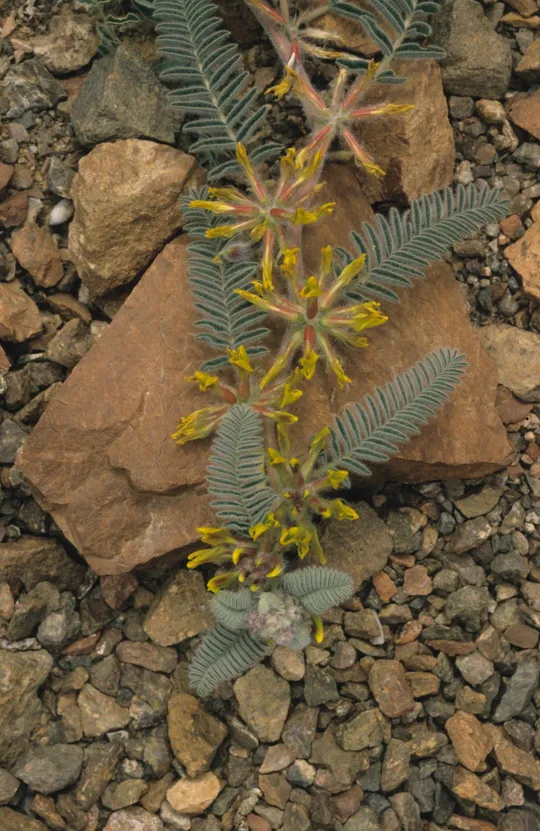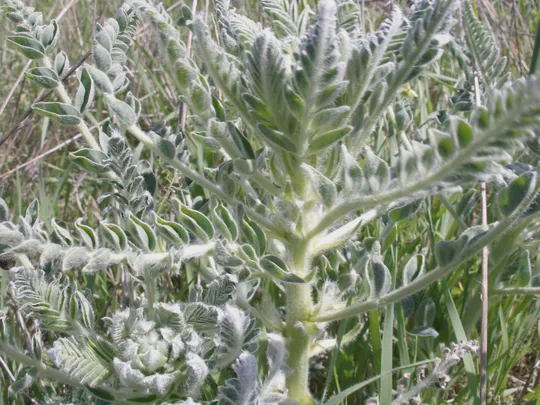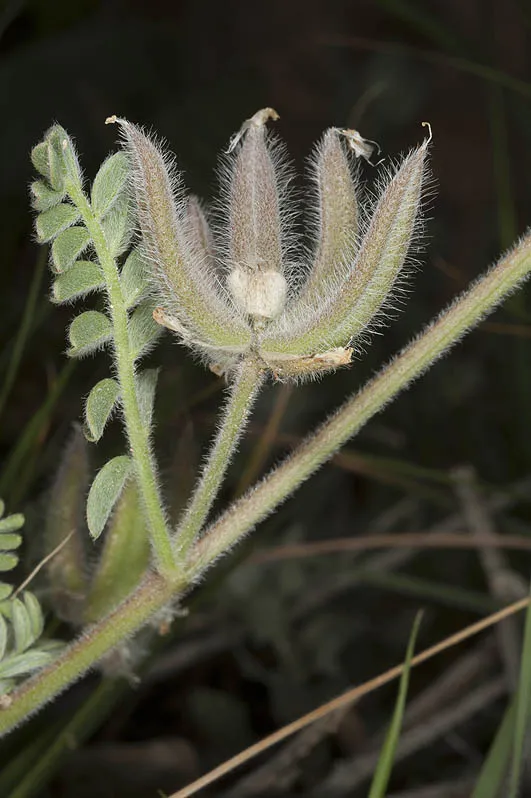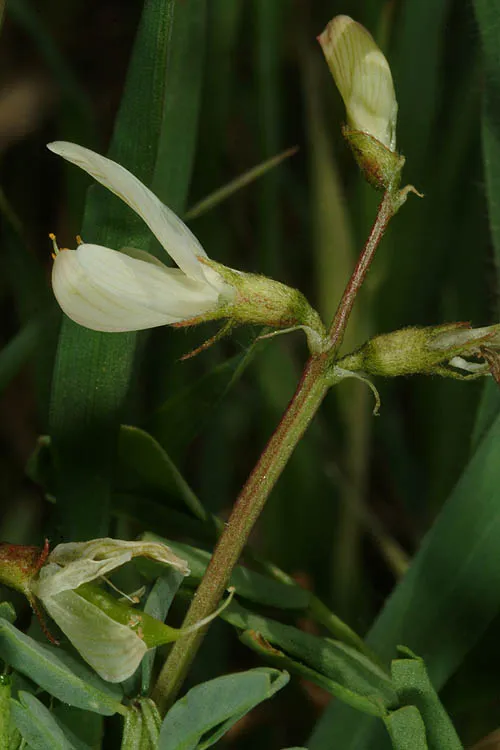Aaronson's Milk-vetch
Astragalus brachystachys
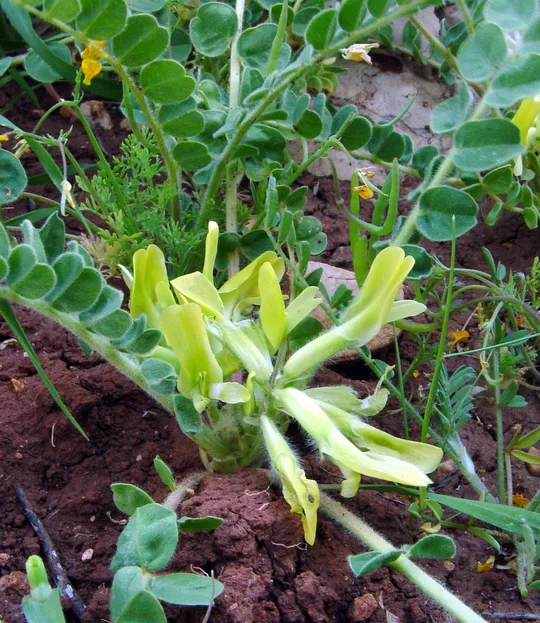
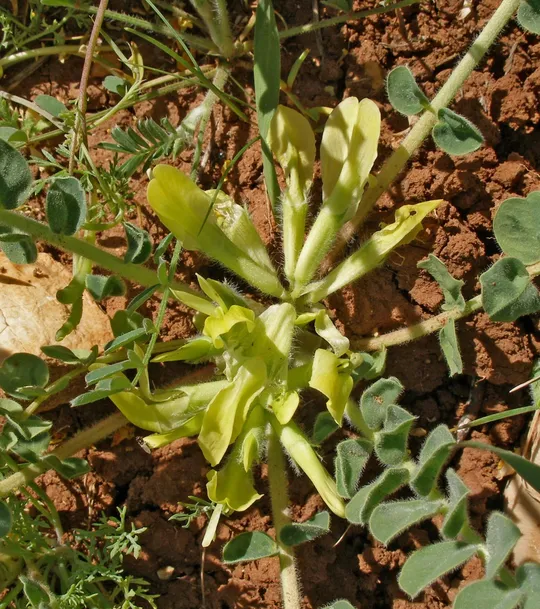
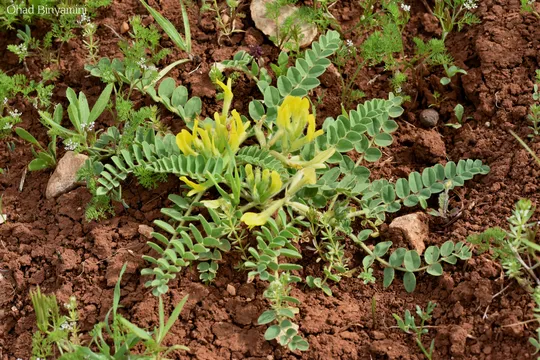
Astragalus brachystachys is found only on
two adjacent sites in the Samarian Desert near the Rimonim interchange; Aaron
Liston and Meyer Shawat found it there in the 1980s, and it was documented
until 2009. It is estimated that there are three sites in the country. The
species is not found anywhere else in the transition zone in Samaria and Judea
despite the existence of similar conditions.
Edges of traditionally cultivated dryland agricultural
fields on brown-loess alluvial soil rich in silt, in the montane transition zone
of the Mediterranean region, in areas with a precipitation of 300-350 mm, at
altitudes of 600-700 meters.
For the characteristics of the genus Astragalus –
see the A. trimestris. For the
global and local distribution of Astragalus – see A. oocephalus.
According to Podlech (2005), A. brachystachys
belongs to the Caprini section in the genus (Sec. Myobroma) Bunge, sensu
Zohary, 1972; Townsend, 1974). This section is characterized by perennial life
forms but the plant has no stem or peduncle; its leaves are concentrated close
to the ground as a rosette as are the flowers. All the species of this section
have large yellow flowers 18-30 mm in length. There are more than a hundred
species in whose speciation center is in Iran and Central Asia. In Israel and Jordan,
eight species were formerly included in the section, but they have recently been
merged into four species: A. caprinus
that grows from North Africa in the west to Iran in the east; A. brachystachys that was merged
with A. aaronshonianus, which was known only from southern Jordan. A.
dinsmori, which was described by Mouterde as a species endemic to Jebel
Druze, was included as a synonym, as well as a variety of A. pinetorum from southern Syria; A. aaronii
is a species endemic to Edom; and A. pinetorum grows in the tragacanth
zone on Mount Hermon.
The distinction between the species in the section is
very difficult. A. caprinus
and A. pinetorum have relatively
narrow elliptical leaflets, and A. aaronii and A. brachystachys
have broad coin-like obtuse leaflets. The length of the gynophore (the fruit stalk
that is located between the flower calyx and the ovary base) which was considered
an important character to distinguish between the species, turned out to be a character
with great intra-specific variation. A. aaronii, which is endemic to the
sandstone area in Petra, is the most
unique and beautiful of the species in the section: its pod is keeled ventrally
and dorsally, while in the other species there is only a ventral keel. Even
this feature varies intra-specifically.
According to the Flora of Iraq, A. pinetorum differs from A. brachystachys and from A. caprinus by its smaller calyx (12-15 mm), smaller flower (15-19 mm) and an inflorescence
that lacks a central peduncle. A. brachystachys differs from A. caprinus
by the hairiness of the fruit: its pod has short appressed hairs compared with
the long spreading hairs in A. caprinus. Only a study of the populations
in the laboratory and in the field may possibly clarify the taxonomic status of
the species in the section Caprini.
·
Astragalus
brachystachys is limited to a single site, extremely rare and sparsely
documented. It is not clear why it is not more common in the transition zone, in
which this habitat is widespread.
·
The populations at
both sites are very small. In 2006-2010, less than 15 plants were counted at each
site. The plants near the Rimonim Interchange are connected by a common
rhizome.
·
A. brachystachys
has an affinity for patches of alluvial soil in the transition zone. Due to their
good soil type there is concern that the two adjacent sites will be converted
to intensive agriculture.
·
The sites are
not located in a nature reserve.
·
A. brachystachys
does not appear in the red plant lists of other countries.
The Astragalus brachystachys populations in Rimonim should be monitored. A local reserve should be declared to
protect the species and prevent its extinction due to the development and
expansion of the settlement.
Astragalus brachystachys grows in eastern
Turkey, western Iran, northern Iraq, the Syrian Desert, Jordan and Israel.
Astragalus brachystachys is a perennial
herbaceous species growing at the edges of fields on alluvial soils in the transition
zone, on two adjacent sites in eastern Samaria. Its populations are small and threatened
due to the vulnerability of its habitat and because of the proximity of the two
sites.
ראה קדד לביד.
Current Occupancy Map
| 1000 squre meter pixel | 5000 squre meter pixel | 10000 squre meter pixel | |
|---|---|---|---|
| number of observations | 0 | 0 | 0 |
| in total pixels | 0 | 0 | 0 |
| Family | Fabaceae |
| Classification | On the endangered species list |
| Ecosystem | Semi-Steppe Belt |
| Chorotype | Irano - Turanian |
| Conservation Site | Rimonim Interchange in the Binyamin semi-steppe |
| Rarity |
1
5
6
|
|---|---|
| Vulnerability |
0
2
4
|
| Attractiveness |
0
0
4
|
| Endemism |
0
0
4
|
| Red number |
1
4.2
10
|
| Peripherality | E |
| IUCN category | DD EW EX LC CR EN VU NT |
| Threat Definition according to the red book | Endangered |
 Based on:
Based on:
